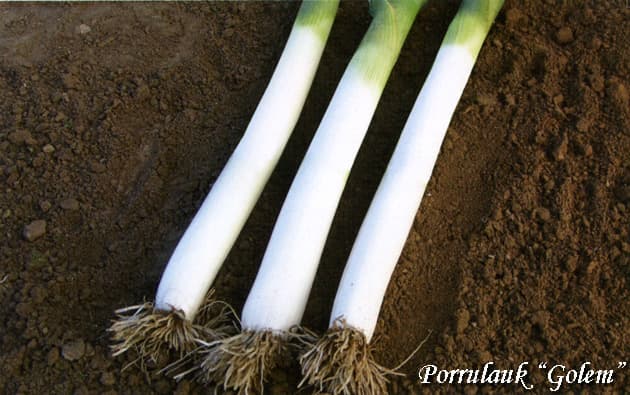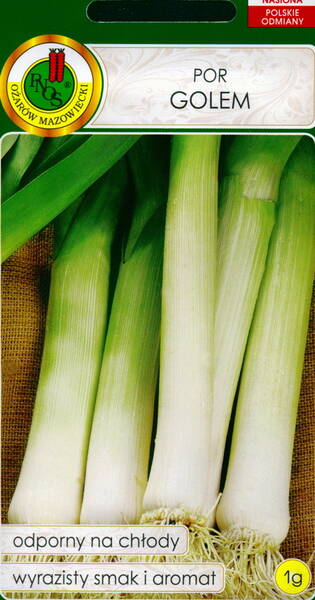A mid-early variety intended for summer and early autumn harvesting. The leaves are erect and medium-green. Sowing from January until April, planting out from April.
The length of the consumable part of the plant is 45 - 50 cm. 1 gram = 300-320 seeds.

Garden Leek, Allium porrum L.
Leek is native to the Mediterranean. Various varieties are available for harvest throughout the year (with the exception of spring).
Requirements: with regard to the climate, the leek does not put forward special requirements. He prefers moderate temperatures.
Its requirements for soil quality are somewhat higher than those of onions: a high content of humus and, accordingly, nutrients.
Sowing: if you want to get the earliest possible harvest, sowing is done in trays under glass already at the end of January (germination temperature +15+18°C).
Leek seedlings are planted in prepared grooves 10 cm deep, they are evenly covered with earth, and later the plants are spudded in the same way as potatoes.
From the end of March, young plants can be transplanted into open ground. However, in the initial period, they should be covered with a film.
Leek, which is scheduled to be harvested in the fall, is much less of a hassle because it is planted directly in open ground from mid-April to mid-June. If necessary, young plants can be thinned out as early as July. The distance between rows is 25-30 cm and the spacing between plants in a row is 15 cm.
Fertilization: being a strong consumer of nutrients, the leek requires, in addition to a high content of compost, additional fertilizers.
In autumn, organic fertilizers or rotted manure are applied to the soil, but by no means fresh.
In the process of onion ripening, it is necessary to fertilize twice. For this purpose, nettle mass, a solution of urea or superphosphate (45 g / m2) is well suited.
Care: leeks should be planted as deep as possible to get etiolated stems later. In the future, when digging up the beds, the plants need to be spudded. The water requirement of the leek is quite high, and soil moisture is essential for its growth. Mulching of leek beds is highly recommended.
Harvest: already the first, young, still thin stems of leeks can be eaten. The earliest harvest is possible in July.
Winter leek is harvested from October and throughout the winter in suitable warm climatic conditions. It is extremely frost-resistant, however, during snowless frosts, plants should be covered with fallen leaves or straw. Leek stalks are stored for a long time in a cold cellar or pile.
Biological protection: the moth eats young leaves with a great appetite and penetrates into the plant. You can protect yourself from it by early sowing or using a special net. Dolomite flour is a prophylactic agent. If you plant celery or carrots next to a leek, they will drive away the moth.















